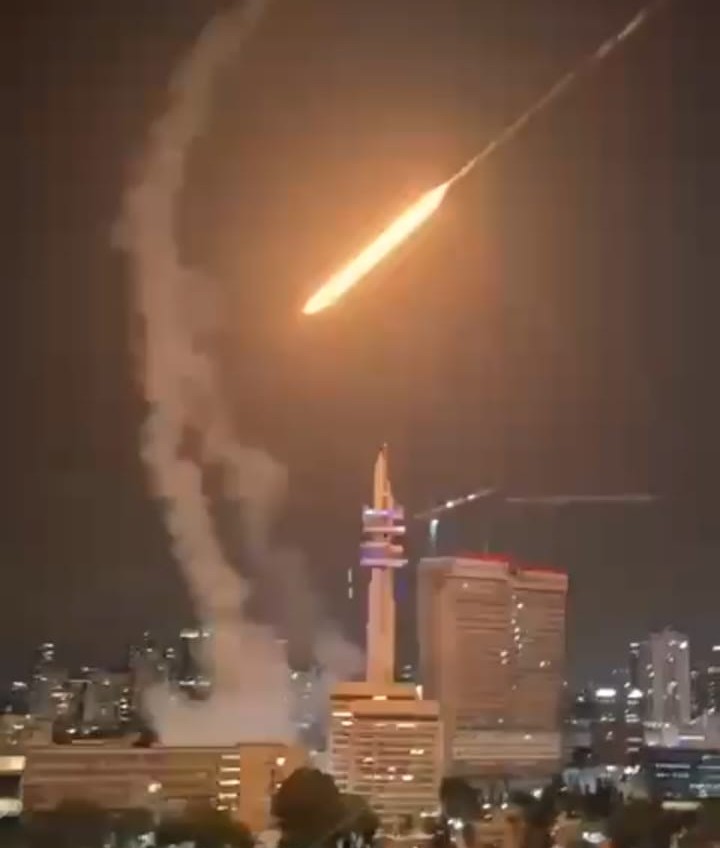
The Israeli military operation against Iran shows no sign of slowing down. The Israeli Air Force (IAF) continues to strike targets across Iran relentlessly—missile bases, depots, command-and-control centers.
Following our previous coverage, the situation continued to evolve. On the afternoon of June 13, reports emerged of explosions at the Fordow nuclear facility—built deep inside a mountain and, alongside Natanz, a key uranium enrichment site. The likely targets were nearby air defense positions, possibly to open a corridor for follow-on strikes.
Explosions were also reported in Isfahan—a uranium conversion site—and once again in Tehran. Israel has established near-complete control of the skies, while Iranian air defenses have responded only sporadically and ineffectively. Ballistic missile launches by Iran are consistently thwarted by Israeli interdiction assets, especially drones, operating deep inside Tehran's airspace.
What stands out is the planning and operational tempo of the Israeli campaign, strongly suggesting some level of U.S. support—particularly in terms of aerial refueling, potentially involving USAF tankers, and access to forward operating locations in neighboring countries such as Azerbaijan, Iraqi Kurdistan, and Syria.
Intelligence also plays a key role. Two US RC-135V RIVET JOINT aircraft were seen taking off from Al Udeid airbase the same morning, implying probable American support. Targets are tracked and engaged in a fast, dynamic kill chain heavily reliant on artificial intelligence—so much so that Iran, more than 1,000 km from Israel, seems to be treated tactically as if it were Gaza.
Later that evening, around 9:00 PM on June 13, Iran launched its long-anticipated counterstrike. At least 100 ballistic missiles—possibly up to 150 according to IDF estimates—were launched in three waves from provinces including Tehran, West Azerbaijan, and Shiraz.
The first wave targeted Tel Aviv. At least three missiles struck their targets: two near an air defense battery and one reportedly close to the Ministry of Defense. Video footage showed at least 30 intercepts, including four exo-atmospheric kills by the ARROW-3 system. Subsequent waves were aimed at Haifa (where over 30 missiles were launched, with at least 7 impacts) and southern cities like Be’er Sheva.
In the early hours of June 14, Israel responded with a new wave of air strikes. In Tehran, the attacks targeted the presidential district and the residence of Supreme Leader Khamenei—who is now believed to be in hiding—along with several locations in western Iran.
In the northwestern province of Zanjan, the command post of the 216th Armored Brigade was reportedly struck. In Asadabad, western Iran, ballistic missile launchers were attacked. Israeli warplanes also returned to Tabriz airbase and likely struck the Isfahan nuclear facility again. At Mehrabad airbase near Tehran, home to Iranian F-14s and MiG-29s, multiple strikes were recorded.
Sources also report a renewed strike on the Parchin complex, located 30 km from Tehran, long suspected of housing nuclear-related explosive testing facilities.
Iran retaliated at dawn with another salvo of ballistic missiles. Most were intercepted—including more exo-atmospheric interceptions by ARROW-3—but at least one missile hit Rishon LeZion, south of Tel Aviv, killing 2 civilians and injuring more than 30. Iranian-aligned media claimed strikes in other parts of Israel, though these remain unverified.
Over the course of the day (June 14), Israel showed no signs of slowing down. The IAF continued to operate with impunity in Iranian airspace, striking mobile and pop-up targets like TELs (Transporter Erector Launchers) and air defense systems—even while they were on the move, as seen in Kermanshah.
Drones are playing a crucial role in target acquisition, providing persistent ISR coverage over western Iran and the Tehran region. It is highly likely that these drones operate from austere forward locations outside of Israel, such as southeastern Syria—where low-flying IAF C-130s have been observed—Iraqi Kurdistan (with U.S. logistical infrastructure), and possibly Azerbaijan.
Alongside the interdiction campaign, Israel has expanded its targeting scope to Iran’s energy infrastructure. On June 14, airstrikes hit facilities in southern Iran’s Bushehr region. Among the targets were the South Pars gas field (with damage to its refinery confirmed by Iranian media), the Fajr Jam refinery, and the under-construction LNG terminal at Kangan.
Iran responded again that evening, around 10:00 PM, launching another wave of missiles at the Haifa area. At least 5 missiles penetrated Israeli defenses, striking the Bazan oil refinery near the airport and other facilities in the port zone.
While Iran continued its retaliatory launches, the IAF struck once more at targets in Tehran. According to IDF sources, 80 targets were hit in one night with around 50 aircraft involved. These included fuel depots (e.g., Sahran Oil Depot), the Ministry of Defense, and buildings tied to Iran’s nuclear project—specifically the SPND Nuclear Project Headquarters—and the military-industrial complex. In the eastern suburb of Narmak, a residential building was struck, likely in a targeted assassination attempt against a senior IRGC figure.
Air defense activity and explosions were also reported in Isfahan later that night.
Meanwhile, the Israeli Air Force attempted a targeted operation in Yemen to eliminate the Houthi Chief of Staff.
The night betwen saturday 14th and sunday 15th, Iran retaliated with 2 more missile salvos—one around 2:00 AM, the second around 3:00 AM. At least 5 missiles impacted Greater Tel Aviv, including in Bat Yam and near Rehovot, where the Weizmann Institute of Science—a major research center in chemistry, biology, and nuclear physics—was hit. The IDF reported that over 70 missiles were launched that night, resulting in more than 240 injuries and at least 11 fatalities in Israel. A U.S. Navy BURKE-class destroyer reportedly assisted with SM-3 intercepts during this attack.
In a further escalation, Iranian drones—likely ARASH-2s—targeted U.S. bases in Erbil and Al Asad (Iraq).
On the morning of June 15, Israel launched fresh airstrikes on Isfahan (targeting drone production and nuclear-related sites), Shiraz (including the Shiraz Electronic Industry facility), Ilam, and Kermanshah.
According to the IDF as of yesterday, since the beginning of Operation RISING LION 170 airstrikes have been conducted, hitting a total of 720 targets across Iran.








.png)
